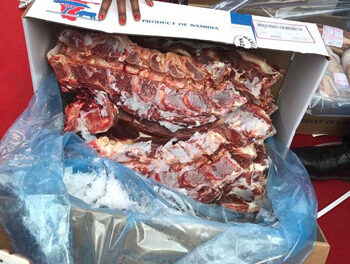
Boosting food security with conservation agriculture
Implementing Conservation Agriculture as a production strategy, depends on effective coordination and collaboration between and among researchers, extension workers, farmers and other stakeholders.
The Fourth National Development Plan has identified Conservation Agriculture as part of its strategy for sustainable crop production to achieve real growth of 4 % per year for national agriculture.
At the launch of the Comprehensive Conservation Agriculture Programme, earlier this year, the Ministry of Agriculture, Water and Forestry, introduced a policy document for agriculture to cover the period 2015 to 2019. Conservation Agriculture is seen as a key component to boost sustainable crop production to improve agricultural output.
At the launch, the Minister of Agriculture, Water and Forestry, Hon John Mutorwa said the policy document aims to promote food security which not only focuses on higher production and access to food but also on the need to address the destructive effects of agricultural production practices on the environment.
According to the policy document, the ministry expects that the uptake of Conservation Agriculture by farmers will be slow in the beginning, but will accelerate towards the end of the five-year period and beyond. Improving agricultural production supports the Millenium Development Goals to reduced poverty and to reverse the degradation of natural resources.
Drawing from work done locally since the 1990s and by conducting on-farm trials, promising results have been obtained from innovative techniques not previously employed by local farmers. Similar positive results were obtained in forestry.
Conservation Agriculture is managing agro-ecosystems for improved and sustained productivity and food security while preserving and enhancing the resource base and the environment.
Conservation Agriculture is characterized by continuous minimum mechanical soil disturbance, not to harm the permanent organic soil cover. and the diversification of crops planted from one season to the next.
The ministry said farming households will be encouraged and assisted to adopt Conservation Agriculture as a long-term production strategy. The foremost selling point is that yields continue to improve as Conservation Agriculture is practised over many seasons and years. Gradually the soil condition is improved and the positive effects are permanent.
Ten intervention areas are part of the programme as the targeted farmers are all existing crop producers. Subsidies will be made available to communal crop and livestock producers concentrated in the Omusati, Oshana, Ohangwena, Oshikoto, Kavango-East, Kavango-West, Zambezi, Otjozondjupa, Kuneen and Omaheke regions.
Commercial dry land producers, including resettlement farmers and irrigation farmer in the maize triangle, will also be engaged in the first ten-year phse. Small-Scale horticultural producers and Green Scheme projects will be incorporated as the programme shows more results.
Implementing Conservation Agriculture as a production strategy, depends on effective coordination and collaboration between and among researchers, extension workers, farmers and other stakeholders.
The ministry argues that Conservation Agriculture is appropriate for all crop production in the whole country since it aims to address the problem of low and erratic rainfall through the use of planting techniques that reduce water loss and increase infiltration leading to more natural nutrients in the soil.










































